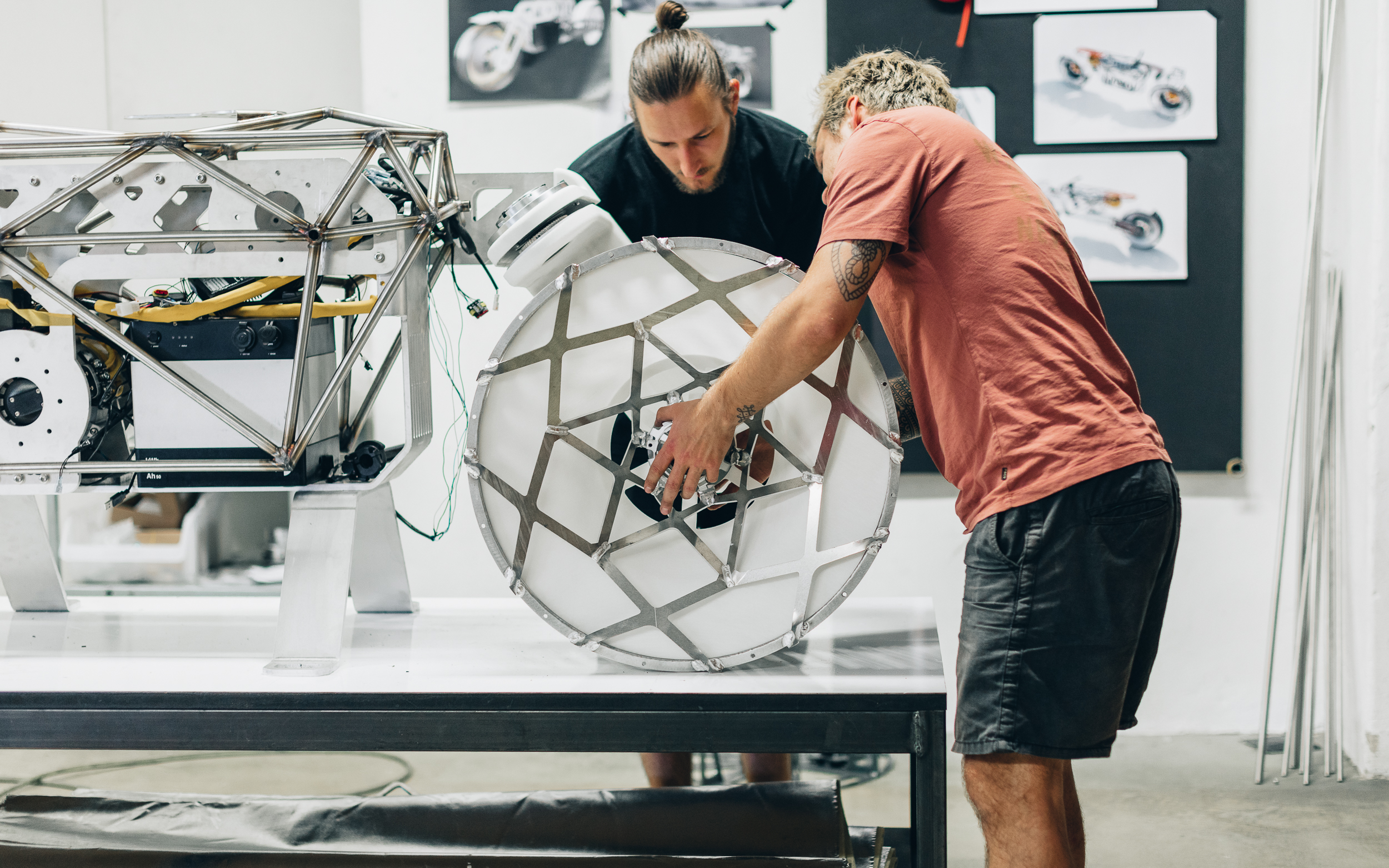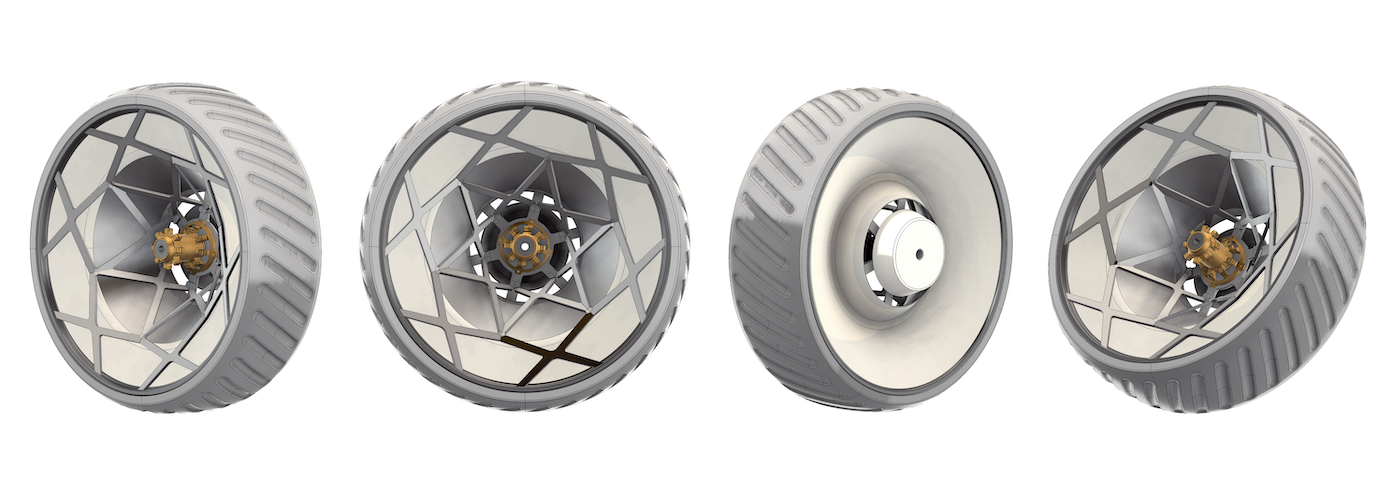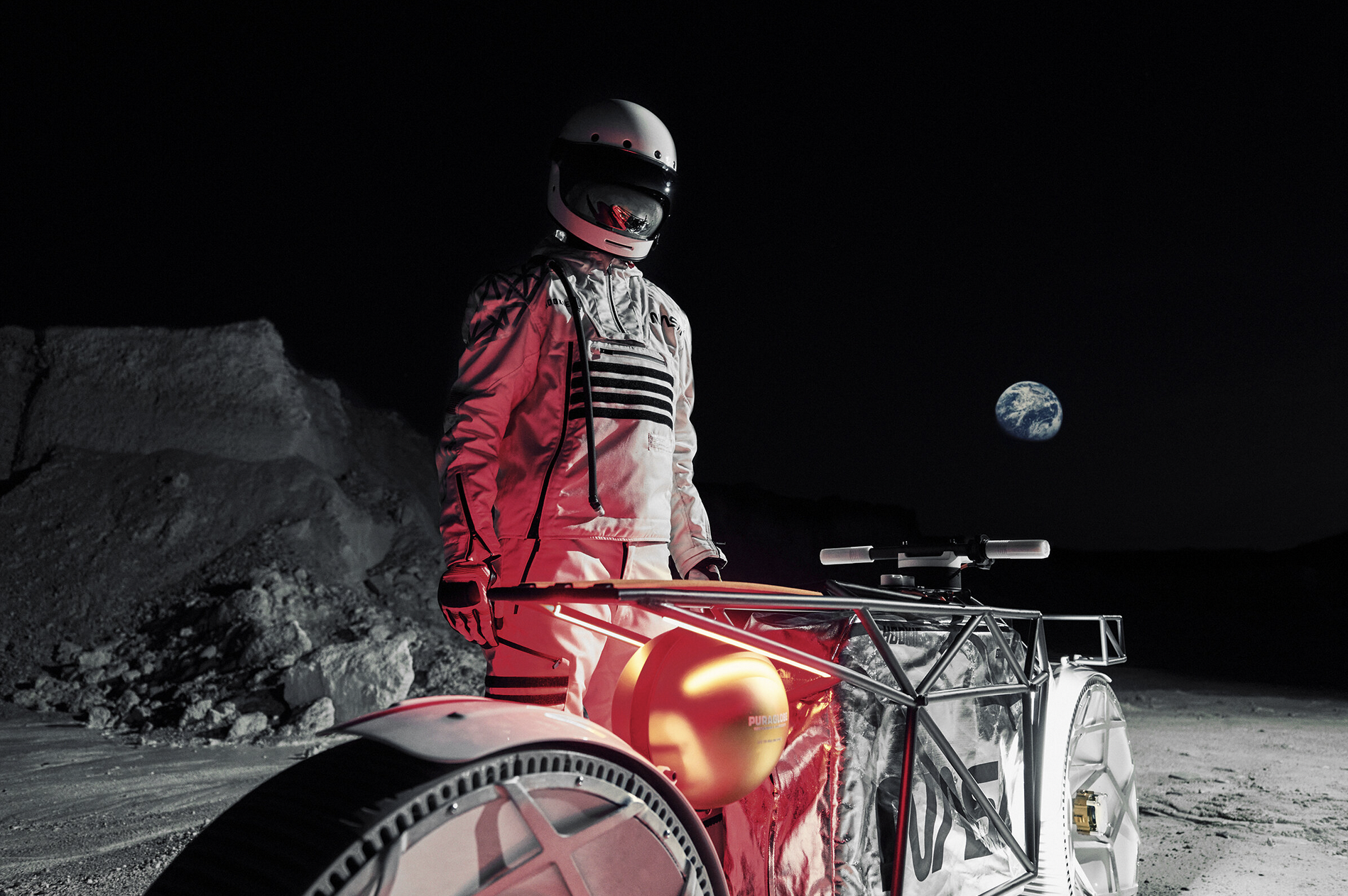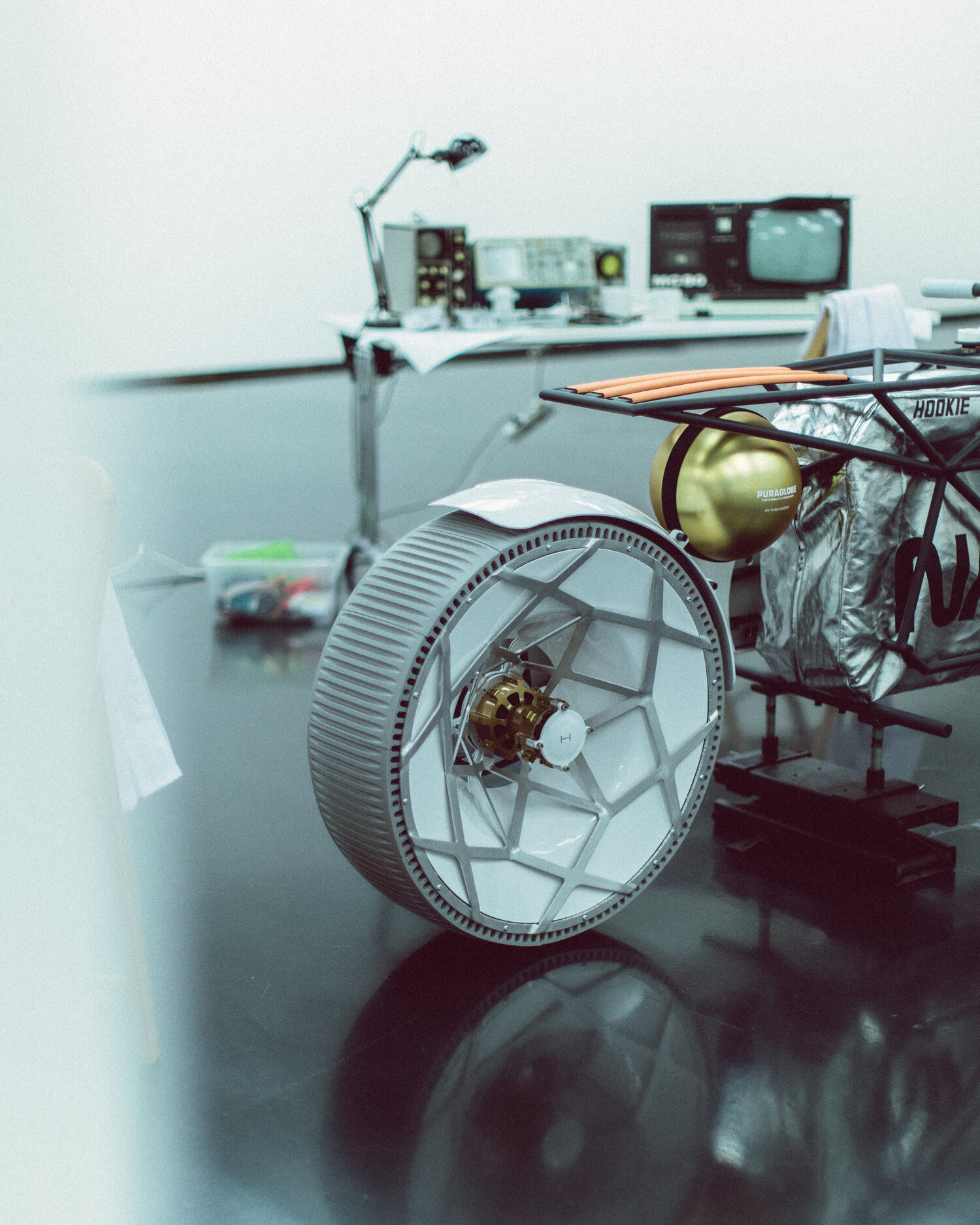German moto think tank Hookie has created the first Moon motorcycle concept, hoping NASA will take notice. Imagined for exploring the moon’s surface, the futuristic motorcycle dubbed Tardigrade has a speed limit of 15 kilometers per hour (9 mph), a battery range of almost 110 kilometers (68 miles), and several 3D printed components, including changeable airless tires that would ultimately allow space crews to tackle any obstacle on its missions. Seeking to draw the attention of the US space agency, Hookie even designed a space motorcycle helmet and suit made of high-tech materials like Kevlar and Nomex, with the NASA logo, and has described the vehicle as the “NASA bike” throughout its design and manufacturing process.
Roving vehicles proved invaluable during the Apollo missions from 1968 to 1972, enabling astronauts to complete almost 20 trips across the moon’s surface. Today, NASA’s rovers have evolved, emerging as one of the most futuristic exploration systems ever created. Furthermore, the space agency is already testing concepts for a new generation of space vehicles to help robots and astronauts explore more than ever before.
In the spirit of former pioneering space rovers, Hookie has focused its efforts on developing a drivable prototype from the fictional concept of a space bike. Nine months after announcing the thought experiment, Hookie’s Tardigrade was finally revealed, and the company says NASA is “speechless.” The result is an invisible frame made of ten millimeter-thin, laser-cut aluminum and a robust exoskeleton made of tubing wrapped around it. The spacious single-sided swing arms and the axles are also made of ultra-light metal, while the textile Kevlar cover with aluminum coating, which protects the sensitive drive in space from cold, radiation, or impacts, comes from NASA supplier DuPont.
Aside from its attractive minimalistic lines, Tardigrade has been fitted with 3D printed mudguards, panels, and rim inlays made from UV-resistant thermoplastics and small parts sintered from nylon using laser beams. However, the biggest challenge was the construction of two highly innovative, ultra-light “balloon wheels” just under 24 inches in diameter, with a width of 7 inches that can carry an overall weight of roughly 140 kilograms with ease. Since Hookie could not find a provider to develop the tires according to its demanding specifications, the team saw it as an opportunity for even greater innovation.

Nico Müller and his team install the 3D printed airless tire for the lunar motorcycle concept Tardigrade. Image courtesy of Hookie.
“One of the biggest challenges are the wheels – there is nothing comparable, nothing suitable or even useful,” described Hookie co-founder and motorcycle builder Nico Müller. “After testing more than five potential wheel sizes, we decided to completely design the wheels ourselves. The star-shaped spoke that makes up the bike’s distinctive design is one of my favorite parts of this project! Our developed design is based on a Cake (Swedish electric bike company) wheel hub, six-spoke parts, a rim barrel, and two rim lips which were made entirely of aluminum. This extremely light but strong construction makes it possible for us to build wheels of this size.”
Hookie took the cutting edge approach to 3D printing 12 polyurethane tread modules for each wheel, which could be directly secured to the rims. This not only met the needs for the Tardigrade, but it also enabled a new tire system that allows damaged parts of the tire to be replaced—instead of the whole tire itself—adding yet another layer of sustainability to the concept.

Hookie Tardigrade’s designed the innovative 3D printed 12 polyurethane tread modules for each wheel. Image courtesy of Hookie.
The Tardigrade—named after microscopic animals that survive in outer space even under the most adverse conditions—results from collaboration, technology, and sustainability. The moto design experts teamed up with nine partnering businesses, including German industrial binder jetting materials developer Additive Elements and base oil product manufacturer Puraglobe, to create, from scratch, an electric space vehicle never seen before.
Working with Additive Elements, Hookie managed to make the changeable airless tire pieces using a combination of ultra-lightweight binder jetting materials. This is one of the startup’s specialties and has been leveraged by 3D printing manufacturers like voxeljet in recent years. Although the exact material used has not yet been disclosed, Additive Elements is working on the final phase of a new material called AE21 with great mechanical properties that could have been applied to the lunar e-bike.
The original goal was to make the Tardigrade as realistic as possible, with a modular design that could serve future interstellar projects. With a weight (134 kilos) similar to that of some of the lightest motorbikes, this vanguard design has a lot of thought processes behind it and could be a great addition to NASA and eventually help astronauts venture further from Lunar modules than ever before.
Inspired by the digital design of Russian artist Andrey Fabishevsky’s lunar concept bike, the Tardigrade is finally a technical reality, and will debut at the Petersen Automotive Petersen Museum in Los Angeles as part of the ADV Overland exhibition running from July 3, 2021, through March 27, 2022. With the world premiere of its off-Earth prototype, Hookie wants to prove that “even fantastic ideas can mature into a real, tangible object. All it takes is a vision and curiosity about the unknown.”
Subscribe to Our Email Newsletter
Stay up-to-date on all the latest news from the 3D printing industry and receive information and offers from third party vendors.
You May Also Like
Further Understanding of 3D Printing Design at ADDITIV Design World
ADDITIV is back once again! This time, the virtual platform for additive manufacturing will be holding the first-ever edition of ADDITIV Design World on May 23rd from 9:00 AM –...
3D Printer Maker EVO-tech Reborn as NEVO3D — Once More With Feeling
EVO-tech was a 3D printing service and original equipment manufacturer established in 2013 and based in Schörfling am Attersee, Austria. The company produced high-quality material extrusion systems featuring linear bearings,...
3D Systems Brings 3D Printed PEEK Cranial Implant to the U.S. with FDA Clearance
For more than 10 years, 3D Systems (NYSE:DDD) has worked hand-in-hand with surgeons to plan over 150,000 patient-specific cases, and develop more than two million instruments and implants from its...
CDFAM Returns to Berlin for Second Annual Symposium
The second CDFAM Computational Design Symposium is scheduled for May 7-8, 2024, in Berlin, and will convene leading experts in computational design across all scales. Building upon the first event...

































